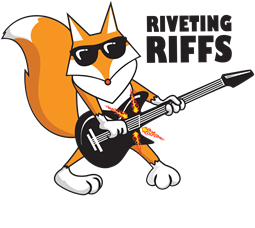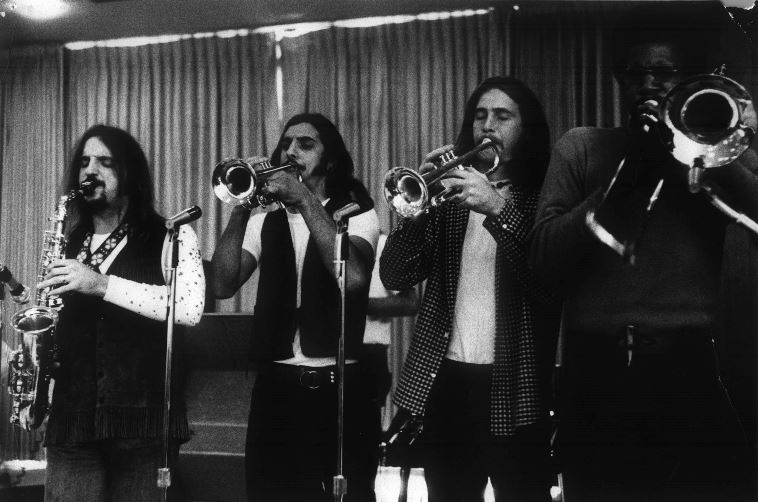

 |
Tom Saviano Interview Part One - Where
It All Began |
|
In one or more of the following capacities, Tom
Saviano has played live or recorded in the studio with and / or composed
for or arranged music for artists and bands such as, Chicago, Juice
Newton, Sheena Easton, Dolly Parton, Sweden’s Björn Skifs, KISS, David
Foster, Dusty Springfield, Melissa Manchester, Bill Champlin, Leo Sayer
and many other iconic artists.
One might say that Tom Saviano’s journey to becoming one of the most
respected individuals in the music industry began with his childhood in
a multi-ethnic neighborhood in Chicago. On the other hand it is far more
likely that we can say that odyssey began with his father Albert who was
born in 1920.
“My dad came through the depression. By the time he was fifteen they
were six years (removed) from the ’29 crash. There were fourteen
children in the family and there was not enough money to buy each of the
children instruments, so he waited until he was married to my mom and I
think she helped him buy his first instrument.
He found Zilner Randolph (Jazz trumpeter) when he saw Lil Armstrong,
Louis Armstrong’s wife coming down the steps of a hotel, the Grand
Terrace in Chicago. He approached her and asked if she knew anybody who
would be a good teacher and who would teach him how to arrange. She gave
him Zilner Randolph’s phone number.
Zilner was the conductor and the music director of the Louis
Armstrong band,” says Saviano.
Continuing he says, “In the forties for the most part when you traveled
to gigs it was by train and there were not many pianos on the trains. If
you had to write arrangements on the way from New York to LA, which
might have been a three to five day trip back then, your band leader
might say write an arrangement on the way (to the next gig). He would
tell my dad if you don’t hear it in your head and if you can’t write it
down without a piano you aren’t going to be able to write the chart.
He was teaching my
dad how to hear pitches and he would do things like open and close a
door with a squeaky hinge and he would ask my dad what is the pitch of
the sound of that hinge. My dad would say Zilner I don’t know and Zilner
would say well you are going to know by the time we get done.
My dad became an arranger studying under who I think was one of the
founders of Jazz (Zilner Randolph). Louis Armstrong is considered to be
one of the founders of Jazz and treasures of America. What Zilner taught
my dad was to know the pitch, have it in your head and be able to write
it without a piano in the room and write a whole arrangement out that
way. He would also tell my dad don’t just listen to Jazz, but also
listen to symphonic music. I get a lot of my ideas by listening to
symphonies and I get inspired by listening to Stravinsky or Beethoven.
Then Zilner applied that to the Jazz medium.
Zilner Randolph was an arranger who wrote for Woody Herman and the older
big bands back in the day. He was an old school writer and a good guy
who was symphonically trained and college educated, which was rare for
an African American musician at that time. He taught a lot of the
underprivileged people in the neighborhood how to read music. He was a
very nice man.”
As for Saviano the younger’s own start in music he says, “When I was in
grammar school, by the time you reached third or fourth grade they asked
if you wanted to play an instrument. My dad was a big band musician and
when I came home and mentioned that to him he said I am going to start
you on something myself and he started me on sax.
My dad came from a large family, so a lot of my father’s brothers were
in the band with him. My dad played the trombone as well, two of his
brothers were trumpet players and two or three of the other brothers
were saxophone players. There was a lot of competition between the
cousins and the children of all of these musicians.
A lot of them were the same age and if one seemed to be playing
and doing better in school on the instrument than another it would be
Tom is doing great or my cousin Rosalie was a good clarinetist and
saxophone player. I was competitive and I wanted to be the top dog, so I
practiced a lot harder.
My dad said let Tom start out on one of the saxes and see how he does,”
recalls Saviano.
A significant turn in his music career coincided with his first big
crush, “One day I was coming home from school and there was a little
girl named Angela and I had a crush on her. We were walking home
together. She had nothing to do with music. I was showing off to her.
One of them was to kick the saxophone case down the sidewalk. I
put the saxophone case on the sidewalk and the more I kicked it the more
she laughed, so I kicked it harder. By the time I got home and pulled
that sax out of the case there was a huge dent in the bell of the sax
and it belonged to my uncle. When my dad saw that he lost it and he took
it away from me immediately and I was punished severely.
I know now that he didn’t really
want to take it away from me, because he wanted me to continue playing,
but he did it to starve me and so he could say now look your brother and
your cousins are all advancing to the next band and you are doing
nothing, because you don’t have an instrument.
I wanted to start playing again and he finally got an old clarinet for
me. You couldn’t take that clarinet out of my hands. I practiced so hard
and I moved up. I got good enough to become first chair.
We lived above my grandfather’s brownstone flat in Chicago. My dad in
addition to being a musician went to work as a laborer and when he came
home he would ask my grandfather, did that guy practice today? That was
me, that guy (he laughs).”
While Tom was busy practicing his music after school and on weekends,
his buddies were trying to get him out of the house to play sports. He
says they even went to the extent of trying to mimic the instruments
that he played.
“They mimicked a trombone and I said I don’t play trombone,” he
remembers.
Tom Saviano’s father facilitated another source of inspiration for him
and he explains, “My dad had a sound on sound tape recorder. He could
record one sound and then bounce it over to the next track and
eventually you could have ten tracks of something if you kept bouncing
back and forth. I would play all of the saxophone parts and I would
listen back to how it sounded and it was an inspiration.
At the same time stereo had just started to come in during the fifties
and sixties. We had a nice stereo unit and my dad bought every Frank
Sinatra record there was and every Count Basie record. There was stuff
from all the studio musicians with whom I eventually started working
later in my life. I knew a lot of these people, because he would point
them out to me and say listen how good they sound. My dad told me, you
want to strive to be as good as those people, because you can go to
Hollywood and work. He had
that dream, because in his band there was a trumpet player from Count
Basie’s orchestra. That trumpet player was named Joe Alexis. It was in
the 1940s and he told my dad they should take the band, hit the road and
go to LA, because the studio scene was just starting then.
My dad wanted to go, but he had all of his brothers in the band
and it was a close knit family and they told him to stay.
He didn’t go and there was a lot of resentment from my dad
towards his brothers later in life.
He told them we had a chance back then and you guys didn’t want
to go.”
There were also those special moments that left lasting impressions on
the young Tom Saviano. He recalls one of them, “One particular concert
that my dad took my brother and I to at the Arie Crown Theater in
Chicago was to see Frank Sinatra singing with the Count Basie Orchestra,
which had Quincy Jones conducting. I was fifteen or sixteen years old.
When I saw that I was blown away and in my mind something clicked. I
thought that’s what I want to do. I was inspired by that.” By his mid-teens Tom Saviano was getting ready to add his third instrument to his repertoire.
“I took lessons from a symphonic flute player when I was fifteen or
sixteen years old, because my father wanted me to learn flute from a guy
who actually played in the symphony orchestra. He said these people are
classically trained and this instrument is all that they play. They will
know tricks and ways of playing the instrument that somebody who is a
doubler (plays more than one
instrument) might not know (how to do).
My dad had started me on sax, but the main instrument was clarinet and I
am glad for that, because the clarinet is a lot harder to play than the
saxophone. If you can get really good on the clarinet, the saxophone
comes a little easier. When I was sixteen years old I got real serious
about it (music) and I am glad that I did.”
More changes were in store for Tom Saviano, changes that would change
the rest of his life.
“I graduated from
high school in 1967 and then we moved to Los Angeles.
I came from a very sheltered background in a segregated community that
is all Italian and you pretty well don’t eat any kind of food except
Italian food for the first seventeen years of your life and when I came
to California I asked somebody what is that green thing you are eating?
It turned out to be an avocado. That is how sheltered I was,” he says.
Coming soon in Riveting Riffs Magazine Part Two of our interview with
Tom Saviano, as he adjusts to life in California, co-founds his first
band and enters the recording studio for the first time, recording his
own music and working in the studio and live with some names you will
easily recognize. To read part two of this interview
click on this link.
|